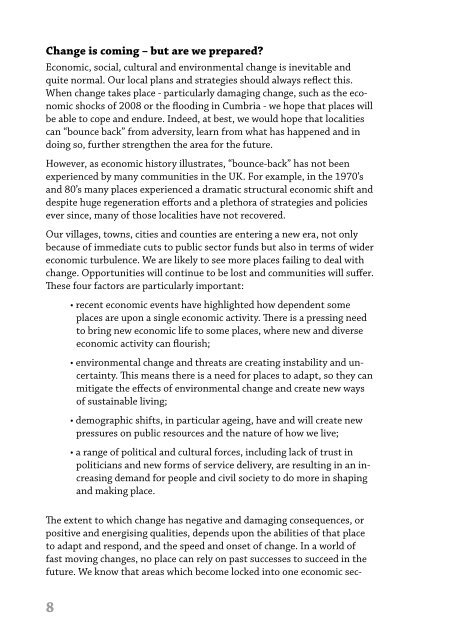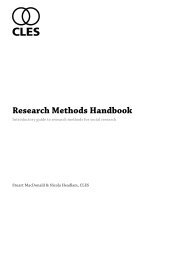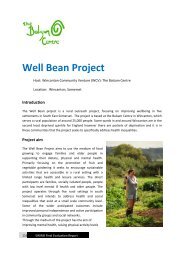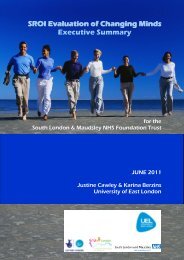Productive local economies: creating resilient places CLES
Productive local economies: creating resilient places CLES
Productive local economies: creating resilient places CLES
You also want an ePaper? Increase the reach of your titles
YUMPU automatically turns print PDFs into web optimized ePapers that Google loves.
Change is coming – but are we prepared?<br />
Economic, social, cultural and environmental change is inevitable and<br />
quite normal. Our <strong>local</strong> plans and strategies should always reflect this.<br />
When change takes place - particularly damaging change, such as the economic<br />
shocks of 2008 or the flooding in Cumbria - we hope that <strong>places</strong> will<br />
be able to cope and endure. Indeed, at best, we would hope that <strong>local</strong>ities<br />
can “bounce back” from adversity, learn from what has happened and in<br />
doing so, further strengthen the area for the future.<br />
However, as economic history illustrates, “bounce-back” has not been<br />
experienced by many communities in the UK. For example, in the 1970’s<br />
and 80’s many <strong>places</strong> experienced a dramatic structural economic shift and<br />
despite huge regeneration efforts and a plethora of strategies and policies<br />
ever since, many of those <strong>local</strong>ities have not recovered.<br />
Our villages, towns, cities and counties are entering a new era, not only<br />
because of immediate cuts to public sector funds but also in terms of wider<br />
economic turbulence. We are likely to see more <strong>places</strong> failing to deal with<br />
change. Opportunities will continue to be lost and communities will suffer.<br />
These four factors are particularly important:<br />
8<br />
• recent economic events have highlighted how dependent some<br />
<strong>places</strong> are upon a single economic activity. There is a pressing need<br />
to bring new economic life to some <strong>places</strong>, where new and diverse<br />
economic activity can flourish;<br />
• environmental change and threats are <strong>creating</strong> instability and uncertainty.<br />
This means there is a need for <strong>places</strong> to adapt, so they can<br />
mitigate the effects of environmental change and create new ways<br />
of sustainable living;<br />
• demographic shifts, in particular ageing, have and will create new<br />
pressures on public resources and the nature of how we live;<br />
• a range of political and cultural forces, including lack of trust in<br />
politicians and new forms of service delivery, are resulting in an increasing<br />
demand for people and civil society to do more in shaping<br />
and making place.<br />
The extent to which change has negative and damaging consequences, or<br />
positive and energising qualities, depends upon the abilities of that place<br />
to adapt and respond, and the speed and onset of change. In a world of<br />
fast moving changes, no place can rely on past successes to succeed in the<br />
future. We know that areas which become locked into one economic sec-









